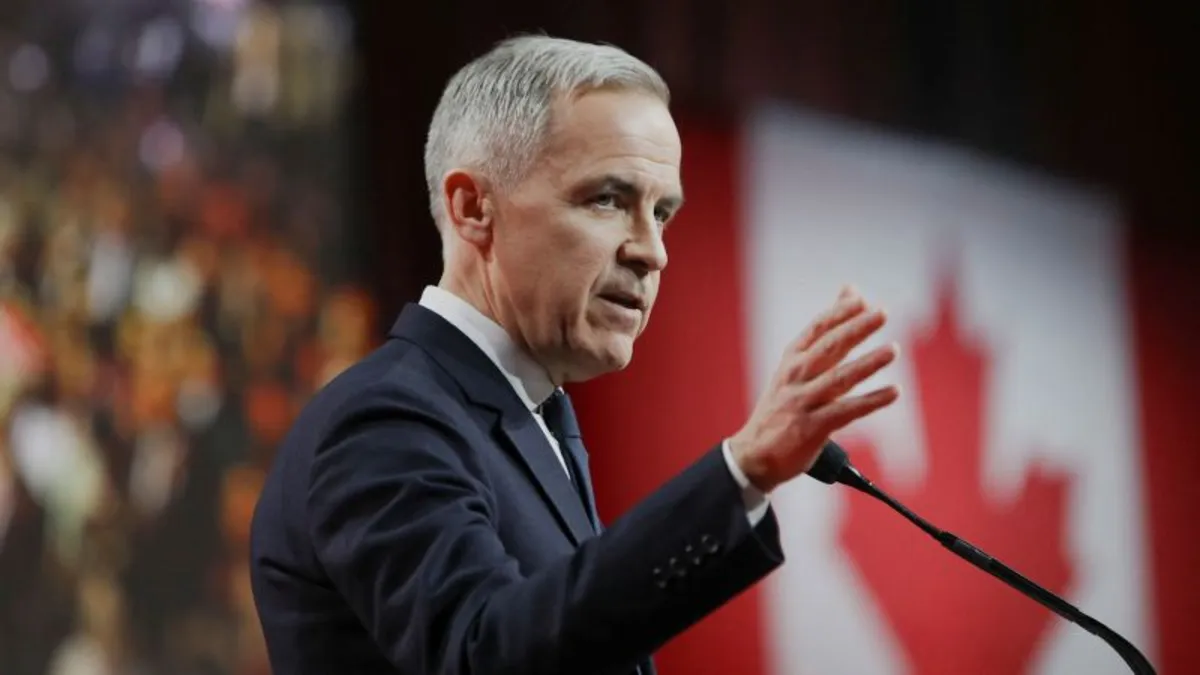
In a significant political shift, Mark Carney has been sworn in as Canada’s new prime minister, succeeding Justin Trudeau. This transition comes at a critical time when Canada is grappling with questions regarding its sovereignty amidst ongoing tensions with the United States, particularly under the leadership of US President Donald Trump, and a complicated trade war with Canada’s largest trading partner.
Mark Carney, a former central banker, has never held public office in Canada prior to his swearing-in ceremony. His appointment comes as he prepares to tackle numerous challenges, including leading the Liberal Party into an election scheduled for later this year. Addressing the media at a press conference following his inauguration, Carney emphasized Canada’s distinct identity, stating, “We will never, ever, in any way, shape or form, be part of the United States. America is not Canada.” This clarion call echoes sentiments that many Canadians share, particularly in light of Trump’s recurring suggestion that Canada should become the 51st US state.
Carney has a distinguished background, having served as the governor of both the Bank of Canada and the Bank of England. His extensive experience in finance has equipped him to navigate challenging economic landscapes, a skill he now aims to apply to his role as prime minister. The Liberal Party has sought Carney’s leadership for over a decade, and he played a crucial advisory role in Trudeau's strategy for Canada’s economic recovery from the Covid-19 pandemic. However, it wasn’t until Trudeau announced his resignation in January that Carney officially entered the political arena. Uniquely, he assumes the role of prime minister without holding a seat in parliament, a rare situation in Canadian politics.
On the same day as his swearing-in, Carney’s new cabinet was also officially appointed, with key figures including Chrystia Freeland and Dominic LeBlanc taking their oaths of office at Rideau Hall in Ottawa, Ontario. LeBlanc, now serving as Minister for Trade and Intergovernmental Affairs, has previously been a vital player in the ongoing trade discussions with the United States, having met with US Commerce Secretary Howard Lutnick just the day before. François-Phillippe Champagne, who has taken over as Minister of Finance, was also part of this important meeting in Washington.
Other cabinet members, such as Mélanie Joly, who will serve as foreign minister, have retained their previous positions from Trudeau’s cabinet. Freeland, a former deputy prime minister who resigned from Trudeau’s cabinet and lost the Liberal Party leadership race to Carney, joins the new cabinet in the role of minister of transport and internal trade. Carney expressed confidence in his team, stating, “This team is built for immediate action and focused on protecting Canadian workers, supporting their families, and growing this great country.”
The handover of power from Trudeau to Carney marks the end of nearly a decade of Trudeau’s leadership. The outgoing prime minister had announced his resignation in January amid concerns that his party might face significant losses in the upcoming election. However, the Liberal Party’s fortunes have seen an upswing due to rising Canadian discontent with Trump’s policies. In a heartfelt farewell message shared on X, Trudeau thanked Canadians for their trust and support throughout his tenure, stating, “Thank you, Canada – for trusting in me, for challenging me, and for granting me the privilege to serve the best country, and the best people, on earth.”
As Canada embarks on this new chapter under Mark Carney’s leadership, all eyes will be on his government to see how it addresses the pressing issues facing the nation, especially in relation to its southern neighbor.